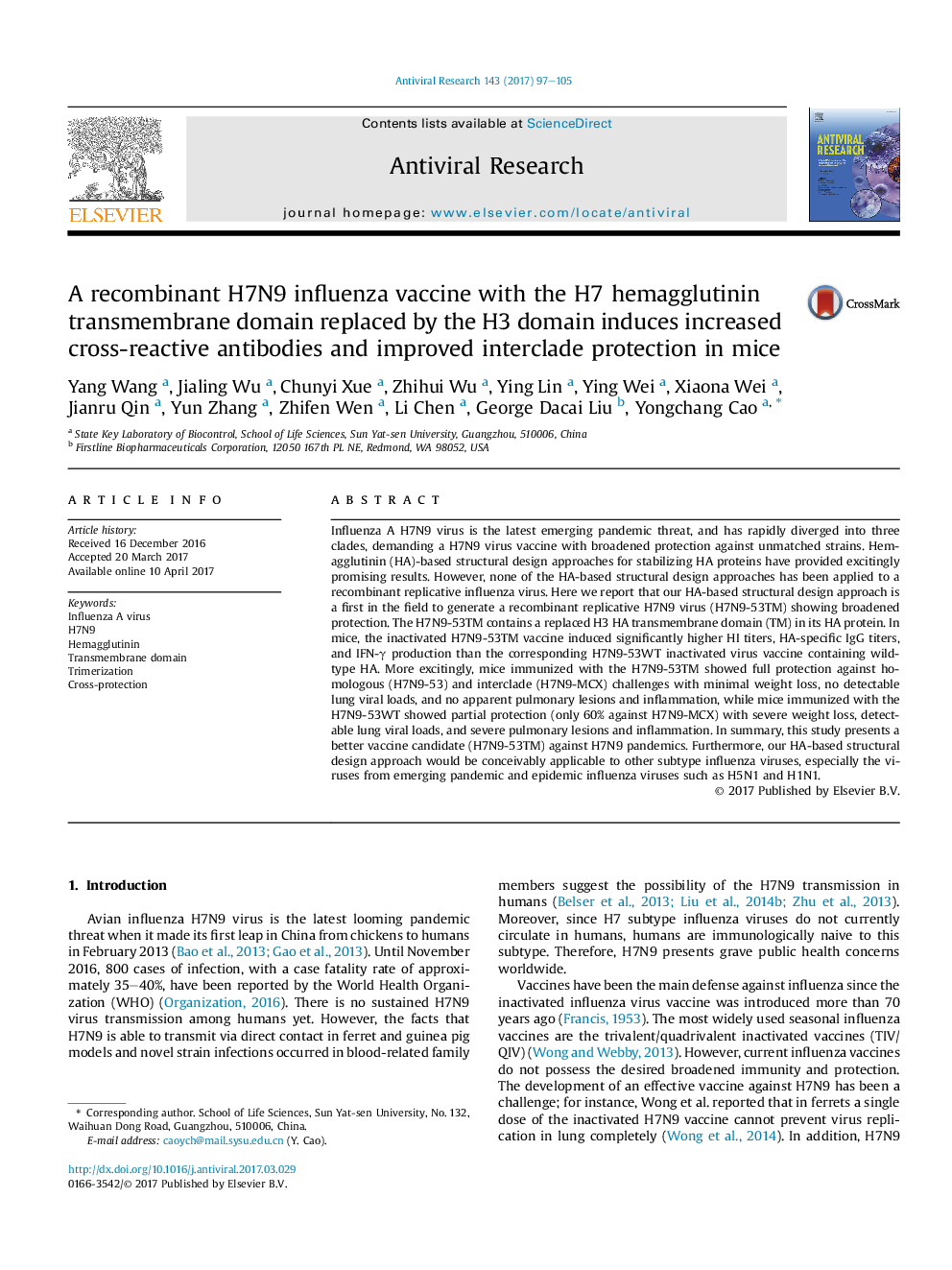| Article ID | Journal | Published Year | Pages | File Type |
|---|---|---|---|---|
| 5551768 | Antiviral Research | 2017 | 9 Pages |
â¢The recombinant H7N9-53TM virus with the H7 hemagglutinin transmembrane domain (TM) replaced by the H3 TM was rescued.â¢Inactivated H7N9-53TM vaccine induces increased cross-reactive antibodies and improved interclade protection.â¢The H3 TM domain replacement technology might be applicable for other subtypes of influenza viruses.
Influenza A H7N9 virus is the latest emerging pandemic threat, and has rapidly diverged into three clades, demanding a H7N9 virus vaccine with broadened protection against unmatched strains. Hemagglutinin (HA)-based structural design approaches for stabilizing HA proteins have provided excitingly promising results. However, none of the HA-based structural design approaches has been applied to a recombinant replicative influenza virus. Here we report that our HA-based structural design approach is a first in the field to generate a recombinant replicative H7N9 virus (H7N9-53TM) showing broadened protection. The H7N9-53TM contains a replaced H3 HA transmembrane domain (TM) in its HA protein. In mice, the inactivated H7N9-53TM vaccine induced significantly higher HI titers, HA-specific IgG titers, and IFN-γ production than the corresponding H7N9-53WT inactivated virus vaccine containing wild-type HA. More excitingly, mice immunized with the H7N9-53TM showed full protection against homologous (H7N9-53) and interclade (H7N9-MCX) challenges with minimal weight loss, no detectable lung viral loads, and no apparent pulmonary lesions and inflammation, while mice immunized with the H7N9-53WT showed partial protection (only 60% against H7N9-MCX) with severe weight loss, detectable lung viral loads, and severe pulmonary lesions and inflammation. In summary, this study presents a better vaccine candidate (H7N9-53TM) against H7N9 pandemics. Furthermore, our HA-based structural design approach would be conceivably applicable to other subtype influenza viruses, especially the viruses from emerging pandemic and epidemic influenza viruses such as H5N1 and H1N1.
